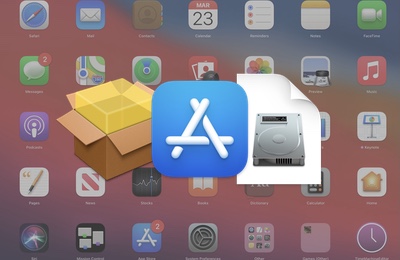

- #Create an install package for mac mac os x
- #Create an install package for mac software license
- #Create an install package for mac software
- #Create an install package for mac zip
To do this in OS X, open the installer package of your choosing and the central OS X installer program will open. Pressing Command-I in the OS X installer should bring up a listing of all files and where they will be installed (click for larger view). Since programs distributed in installer packages may place multiple files in the system folder, global library, and hidden folders on your boot disk, it may help to check what these changes will be before committing to installing the software. The installer utility is a central way for developers to perform checks for operating system requirements or other details before installing, and also is a way to have the system create receipts after installation, which can be used to include their installed files in special routines like permissions fixes. When opened, these packages will launch the OS X installer utility, which is located within the /System/Library/CoreServices/ folder, and which will read the package contents and place them in the appropriate locations.
#Create an install package for mac zip
These programs are generally distributed as installer packages which look like an orange box, and which are downloaded in a disk image, ZIP file, or other container. While many developers subscribe to a self-contained approach, others still need to place resources such as frameworks, extensions, plug-ins, and fonts in shared locations on the system. This approach to managing programs differs from the classic approach where program installers place them and their resources in specific folders or other locations on the filesystem (such as the system folder) that are needed for the program to run. app file is actually a folder that contains the program executable, along with configuration files and other resources that can sometimes be quite extensive. app file that you put in your Applications folder or elsewhere on your system.

#Create an install package for mac software
Instead of distributing multiple files for a package, this allowed all of the software files to be contained in a single file for easier distribution with the benefit of package signing.Many applications in OS X are self-contained applications packages, where all of the resources that the program needs to run are located within the.
#Create an install package for mac mac os x
In Mac OS X Leopard the software packaging method was changed to use the XAR (eXtensible ARchiver) file format the directory tree containing the files is packaged as an xar archive file with a. These packages were a collection of files that resided in folders with a. Prior to Mac OS X Leopard, installer packages were implemented as Mac OS X packages. Installer packages have the file extension. Installer also handles authentication, checks that packages are valid before installing them, and allows developers to run custom scripts at several points during the installation process.
#Create an install package for mac software license
For example, it can be made to display a custom welcome message, software license and readme. The installation process itself can vary substantially, as Installer allows developers to customize the information the user is presented with. Installer launches when a package or metapackage file is opened.

Its purpose is to help software developers create uniform software installers. It was created by NeXT, and is now maintained by Apple Inc. Installer is an application included in macOS (and in its progenitors OPENSTEP and NeXTSTEP) that extracts and installs files out of.


 0 kommentar(er)
0 kommentar(er)
